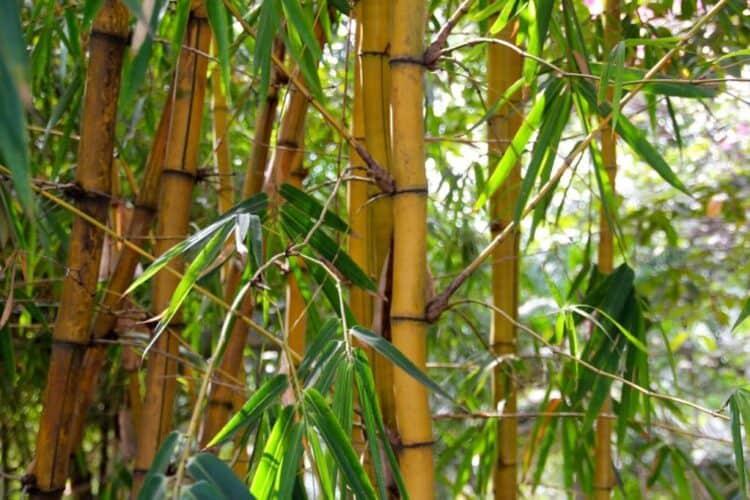Bamboo is actually an evergreen perennial plant. This hardy plant is sustainable and has many uses, such as making hardwood floors and furniture. Bamboo is strong and has even been used to build buildings. It’s also a food source. With that said, can cats eat bamboo? Is bamboo toxic to plants? To answer this question, we must first identify true bamboo, which is safe for cats to eat.
What Is True Bamboo?
There are over 1,000 different types and species of bamboo, and not all are safe for cats to eat. True bamboo, however, is safe and non-toxic. True bamboo is from the subfamily Bambusoideae, and it’s on ASPCA’s list of non-toxic plants for cats, dogs, and horses.
Bamboo is easy to grow and harvest and can reach 3 feet in as little as 24 hours. If you have true bamboo and your cat eats some of it, don’t fret! True bamboo actually has nutritional benefits for cats, as it contains 22% protein.
Cats are obligate carnivores, meaning they need mostly protein in their diets, making true bamboo a healthy and nutritious snack. Notice how we used the word “snack.” You don’t want to let your cat eat bamboo excessively, and it shouldn’t be the sole source of your cat’s diet.

Is Lucky Bamboo Toxic to Cats?
As we’ve mentioned, not all bamboo species are safe for cats, and Lucky Bamboo is one of them. Lucky bamboo is toxic to cats. This type of bamboo belongs to the species Dracaena sanderiana, and it’s not actual bamboo, even though it may look similar.
These types of bamboo are mainly houseplants and are also known as a Ribbon plant, Friendship Bamboo, Curly Bamboo, Chinese Bamboo, and Chinese Water Bamboo. If you have any of these types in your home, you’ll want to either get rid of them or place them out of reach from your cat.
How to Tell the Difference Between True Bamboo and Lucky Bamboo
Are you not sure exactly what type of bamboo you have? That’s ok because we’re about to explain how to differentiate between the two.
- True bamboo is a tall grass that grows as much as 3 feet in a day. It works great as a privacy fence, too, because it can grow as tall as 100 feet.
- The stem of Lucky bamboo has a fleshy feel and grows the same way as houseplants, which is certainly not 3 feet in a 24-hour period.
- Lucky bamboo can also grow just in water, whereas true bamboo needs soil to live.
If ever in doubt, always ask a sales associate what type of bamboo a plant is before purchasing to ensure your cat’s safety.
Conclusion
True bamboo is perfectly safe for cats to eat occasionally, as it’s a good source of protein. However, if you have a different type of bamboo in or around your home, be sure you know what type it is. If it’s toxic, remove the plants so your kitty cannot get to them. Some common signs of toxicity are difficulty breathing, lethargy, excessive drooling, vomiting, diarrhea, excessive drinking, and irregular heartbeat.
If you suspect your cat has ingested something toxic, call your vet immediately, or you can call the ASPCA hotline for immediate help.
Featured Image Credit: Pixabay














